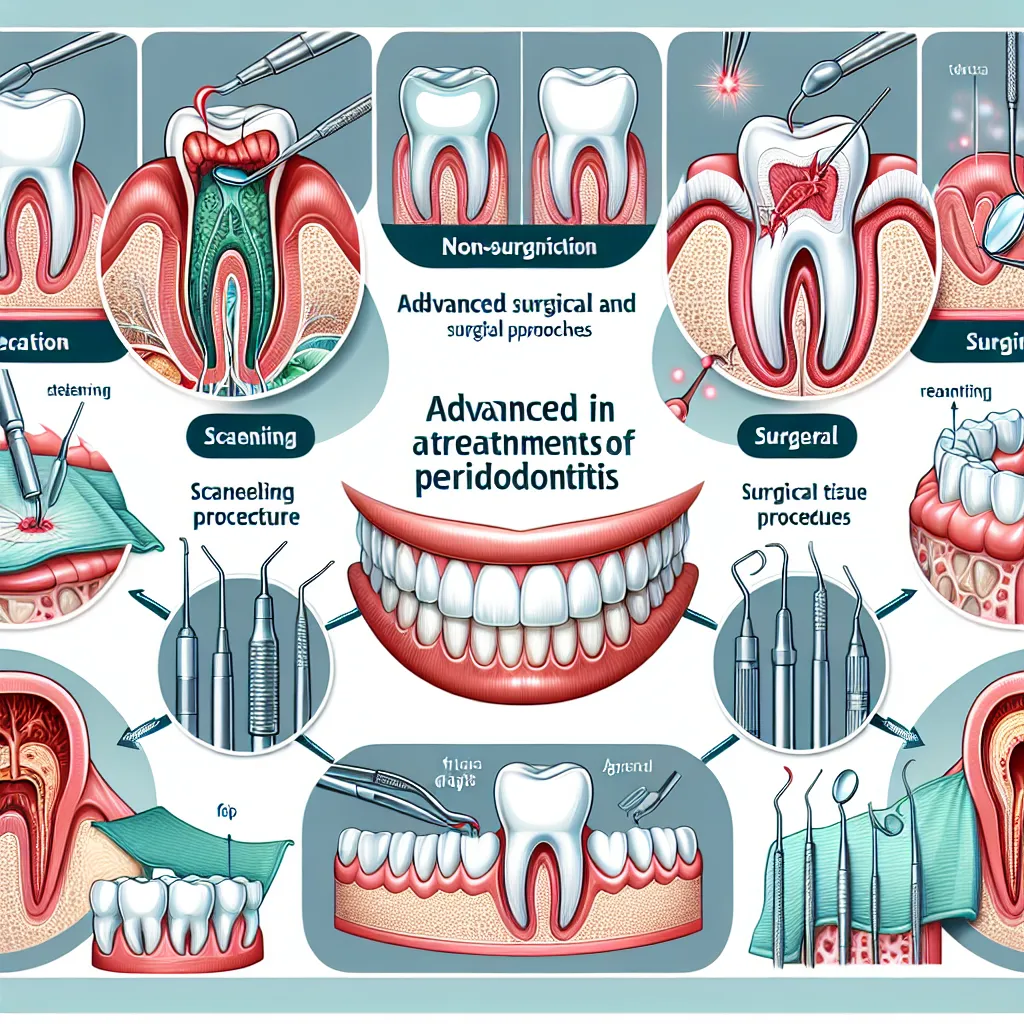
Innovations in Non-Surgical and Surgical Approaches for Advanced Treatments for Periodontitis and Gum Restoration
Periodontitis and gum disease are serious oral health conditions that require advanced treatments for effective management and restoration. In this post, we will explore non-surgical therapies, the use of laser technology, and the applications of regenerative medicine in addressing periodontitis and gum tissue restoration.
Non-Surgical Therapies for Periodontitis Management
Periodontitis, a severe gum infection that damages the soft tissue and destroys the bone that supports your teeth, requires diligent management to prevent further progression and tooth loss. While surgical interventions are often necessary in advanced cases, non-surgical therapies play a crucial role in treating and controlling periodontitis.
1. Scaling and Root Planing
Scaling and root planing, also known as deep cleaning, is a common non-surgical procedure that involves removing plaque and tartar from the tooth surfaces and root surfaces below the gumline. This helps to eliminate bacteria and reduce inflammation, promoting gum healing and preventing disease progression.
2. Antimicrobial Mouthwash
Antimicrobial mouthwashes containing chlorhexidine or essential oils can help reduce bacteria in the mouth, promoting gum health and controlling periodontal disease. Regular use of antimicrobial mouthwash as part of your oral hygiene routine can complement other non-surgical treatments and improve overall oral health.
3. Local Antibiotics
In some cases, your dentist may recommend the use of local antibiotics, such as Arestin, placed directly into the gum pockets after scaling and root planing. These antibiotics target the infection directly at the source, aiding in the healing process and preventing further damage to the gums and bone.
4. Laser Therapy
Laser therapy is a minimally invasive treatment option that can help reduce bacteria and inflammation in the gum tissue. The focused laser energy targets and eliminates diseased tissue while promoting healing and regeneration of healthy tissue. This advanced technology offers a comfortable and effective alternative to traditional surgery.
5. Nutritional Counseling
Proper nutrition is essential for overall health, including gum health. Nutritional counseling can help you understand which foods promote gum health and which ones can worsen inflammation and periodontal disease. A well-balanced diet rich in vitamins and minerals is key to supporting your body’s natural defense mechanisms against gum disease.
Laser Therapy in Periodontal Treatment
When it comes to advanced treatments for periodontitis and gum restoration, laser therapy stands out as a cutting-edge and innovative approach. The utilization of laser technology in periodontal treatment has revolutionized the way we address gum disease and tissue regeneration.
1. Precision and Efficiency
Laser therapy offers a level of precision that traditional methods cannot match. The focused beam of light energy targets diseased areas with accuracy, minimizing damage to surrounding healthy tissue. This precision enhances the efficiency of the treatment, leading to better outcomes and faster healing.
2. Minimally Invasive Procedure
One of the key advantages of laser therapy is its minimally invasive nature. Unlike traditional surgical procedures that involve incisions and sutures, laser treatment is much gentler on the gums. The patient experiences less discomfort, reduced bleeding, and a lower risk of infection. This makes the recovery process smoother and more comfortable.
3. Promotes Regeneration
Another remarkable benefit of laser therapy is its ability to promote tissue regeneration. The laser stimulates the body’s natural healing response, encouraging the growth of new gum tissue and bone. This regenerative aspect is crucial for restoring the health and structure of the gums, leading to long-term improvement in oral health.
4. Targeted Bacteria Elimination
Laser therapy effectively targets and eliminates bacteria that cause periodontal disease. The heat produced by the laser destroys bacteria on contact, reducing the risk of infection and inflammation. This targeted approach helps in controlling the progression of gum disease and maintaining oral health.
Regenerative Medicine in Gum Tissue Restoration
Regenerative medicine offers a revolutionary approach to gum tissue restoration, providing new hope for individuals suffering from gum diseases like periodontitis. By harnessing the power of the body’s natural healing mechanisms, regenerative techniques aim to not just treat the symptoms but to promote the regeneration of damaged gum tissues, leading to long-term oral health benefits.
1. Platelet-Rich Plasma Therapy: A Promising Solution
Platelet-rich plasma (PRP) therapy is emerging as a promising treatment option in gum tissue restoration. This innovative technique involves extracting a sample of the patient’s blood, processing it to concentrate the platelets, and then injecting the PRP directly into the gum tissue. The growth factors released by the platelets stimulate tissue repair and regeneration, helping to restore health and functionality to the gums.
2. Stem Cell Therapy: Unlocking the Potential of Regeneration
Stem cell therapy holds immense potential in gum tissue restoration by providing a source of undifferentiated cells that can develop into specialized gum tissues. By introducing stem cells into the damaged areas of the gums, this therapy promotes the growth of new, healthy tissues, reversing the effects of gum disease and promoting overall oral health.
3. Growth Factors and Tissue Engineering: Customized Solutions for Gum Health
The combination of growth factors and tissue engineering techniques offers a customized approach to gum tissue restoration. By creating biomaterial scaffolds infused with growth factors and other bioactive molecules, researchers can design tailored solutions that promote the regeneration of specific types of gum tissues, addressing the unique needs of each patient.